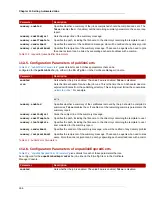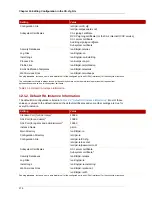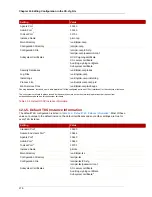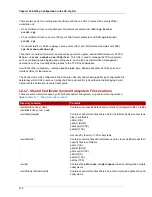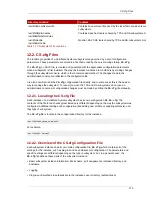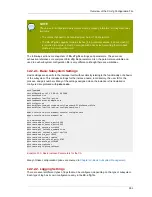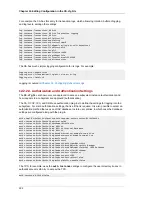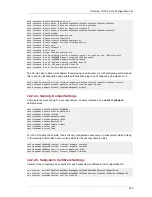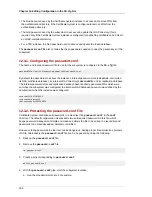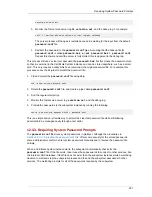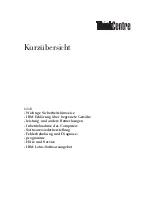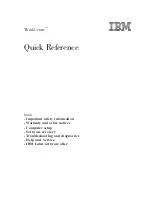
CS.cfg Files
279
Directory Location
Contents
/var/lib/tomcat5/server/lib
Contains Java archive files used by the local Tomcat web server and shared by the Certificate System subsystems.
Not used by the TPS and RA
subsystems.
/usr/lib/httpd/modules
/usr/lib64/httpd/modules
Contains Apache modules shared by TPS and RA subsystems.
Not used by the CA, DRM, OCSP, or TKS subsystems.
/usr/lib/mozilla
/usr/lib64/mozilla
Mozilla LDAP SDK tools shared by TPS and RA subsystems.
Not used by the CA, DRM, OCSP, or TKS subsystems.
Table 12.7. Subsystem File Locations
12.2. CS.cfg Files
The runtime properties of a Certificate System subsystem are governed by a set of configuration
parameters. These parameters are stored in a file that is read by the server during startup,
CS.cfg
.
The
CS.cfg
, an ASCII file, is created and populated with the appropriate configuration parameters
when a subsystem is first installed. The way the instance functions are modified is by making changes
through the subsystem console, which is the recommended method. The changes made in the
administrative console are reflected in the configuration file.
It is also possible to edit the
CS.cfg
configuration file directly, and in some cases this is the easiest
way to manage the subsystem. For example, since the TPS and RA subsystems do not use an
administrative console, all configuration changes must be made by editing the
CS.cfg
file manually.
12.2.1. Locating the CS.cfg File
Each instance of a Certificate System subsystem has its own configuration file,
CS.cfg
. The
contents of the file for each subsystem instance is different depending on the way the subsystem was
configured, additional settings and configuration (like adding new profiles or enabling self-tests), and
they type of subsystem.
The
CS.cfg
file is located in the configuration directory for the instance.
/var/lib/
subsystem_name
/conf
For example:
/var/lib/pki-ca/conf
12.2.2. Overview of the CS.cfg Configuration File
Each subsystem instances has its own main configuration file,
CS.cfg
, which contains all of the
settings for the instance, such as plug-ins and Java classes for configuration. The parameters and
specific settings are different depending on the type of subsystem, but, in a general sense, the
CS.cfg
file defines these parts of the subsystem instance:
• Basic subsystem instance information, like its name, port assignments, instance directory, and
hostname
• Logging
• Plug-ins and methods to authenticate to the instance's user directory (authorization)
Summary of Contents for CERTIFICATE SYSTEM 8.0 - ADMINISTRATION
Page 42: ...20 ...
Page 43: ...Part I Setting up Certificate Services ...
Page 44: ......
Page 190: ...168 ...
Page 208: ...186 ...
Page 223: ...Part II Additional Configuration to Manage CA Services ...
Page 224: ......
Page 256: ...234 ...
Page 270: ...248 ...
Page 280: ...258 ...
Page 292: ...270 ...
Page 293: ...Part III Managing the Subsystem Instances ...
Page 294: ......
Page 408: ...386 ...
Page 438: ...416 ...
Page 439: ...Part IV References ...
Page 440: ......
Page 503: ...Netscape Defined Certificate Extensions Reference 481 OID 2 16 840 1 113730 13 ...
Page 504: ...482 ...
Page 556: ...534 ...
Page 564: ...542 ...


